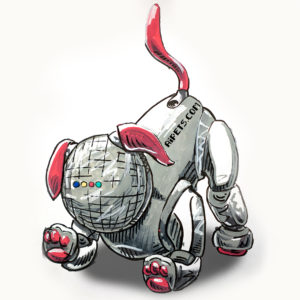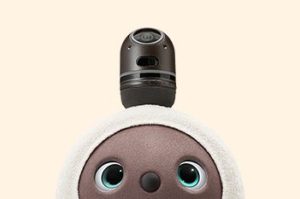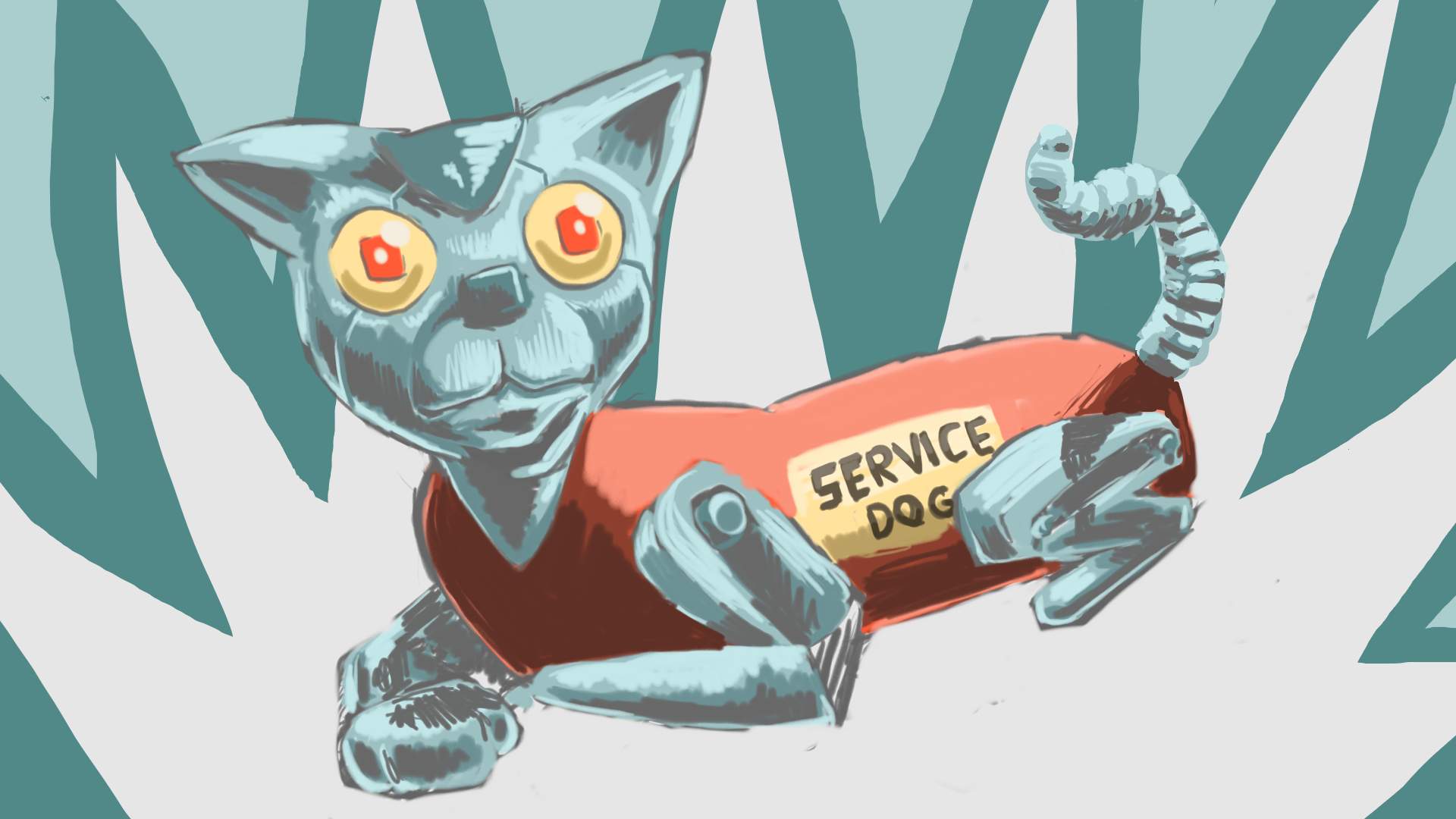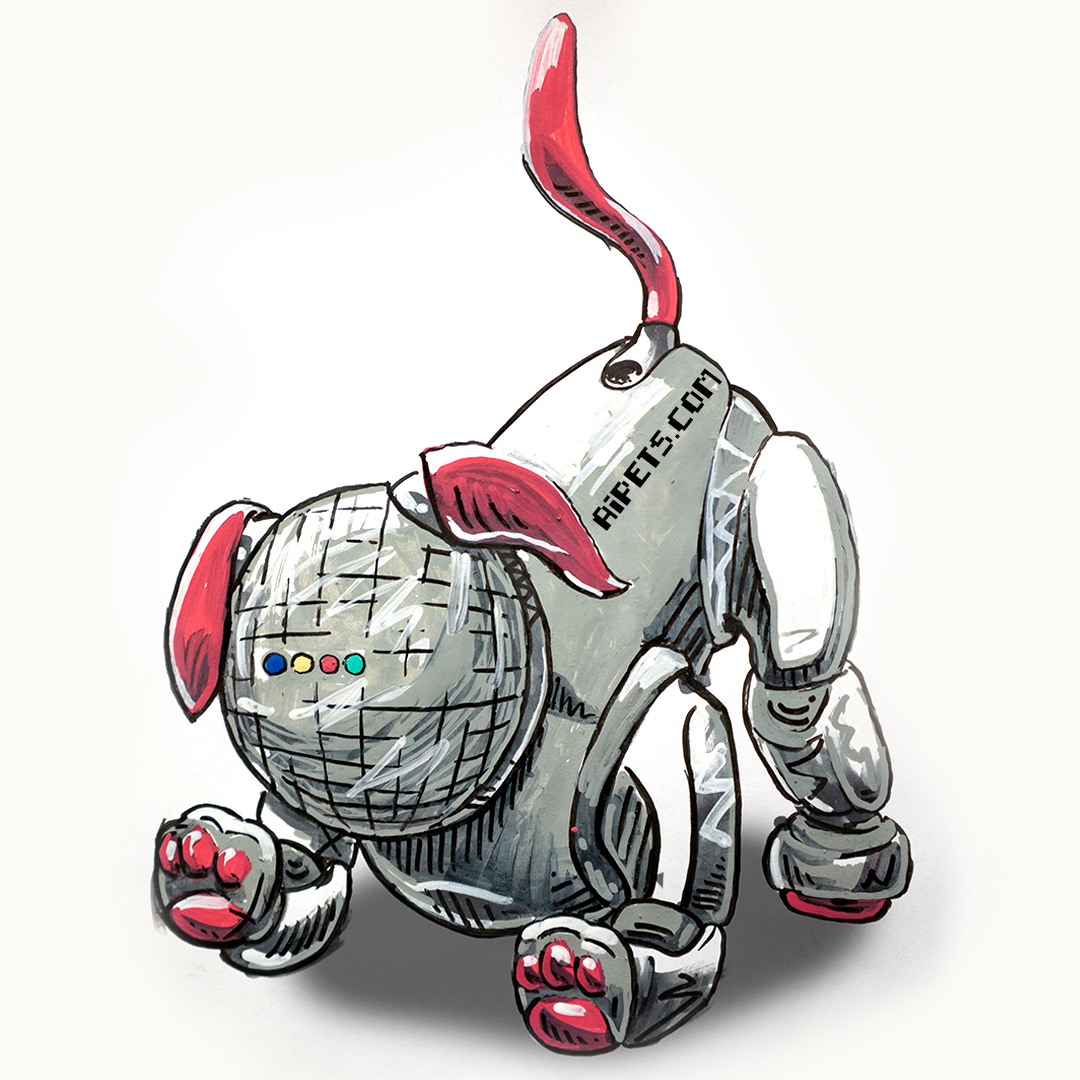Therapeutic Robots: Machines Used for Emotional Support
Many people associate robots solely with STEM (science, technology, engineering, and mathematics) careers. As time passes however, more than just these fields use robots. They’re used in treatments for a variety of difficulties. For example, they help kids with autism spectrum disorder develop social skills. Nursing homes introduce robots as companions for residents. They’re being introduced into treatments for disorders such as anxiety and depression. Physical therapists are even using robots. The focus for today will be how robots, especially robots equipped with artificial intelligence (AI), can be an emotional support animal (ESA), a psychiatric service animal (PSA), or both.
Emotional Support Animals vs Psychiatric Service Animals
An emotional support animal (ESA) is any animal that provides comfort for someone who needs it simply by being with that person. Training isn’t required for an ESA to receive a certification. Any pet can be certified as an ESA no matter their age or species or breed. A mental health professional simply needs to write a letter explaining why the owner needs an ESA.
Psychiatric service animals are different. A psychiatric service animal (PSA) must be professionally trained and certified as a PSA. Their main task isn’t to provide emotional support, though that could come from being there with their owner. In order to qualify for a PSA, the mental disorder of the owner would have to be more debilitating and affect the quality of life. Also, public places are more likely to allow PSAs on the premises than ESAs. There is still a possibility in some countries that a PSA won’t be allowed. That possibility is higher with an ESA.

Robotic Support and Service Animals
There are great aspects about having a living animal there to provide comfort. You can feel their breath and heartbeat. They seem to listen to you when you talk to them. However, as technology and research advances, the possibility and occurrence of robots taking the place of these living animals increases. A simulated heartbeat at a typical rate gives robots the feel of an actual heartbeat. Making the chest of the robot rise and fall can simulate breathing.
AI gives the ability to specialize and personalize robotic pets to treat someone in the best way for them. Animals have trainability, but when it comes down to it, they still have genetics and personalities that can interfere. AI and programming would allow the engineer to build the personality of the pet from the ground up and to have a lot more control over it.
Robots would also be able to combine the aspects of an ESA and a PSA. The robotic pets could be built in a way that would provide comfort, such as having fur like a dog or cat, and the ability to purr and cuddle. They could also be programmed to perform tasks such as getting medication for their owner or leading them out of a situation that could trigger an episode. Introducing robotic pets into this field would give an opportunity to get the best of both worlds without any of the downfalls.
How Would an AI Robot Be Better?
Some of the downfalls of having an animal in the role of support and service is that they require care. Sometimes, the people who need these animals can’t give them the care that they need. They could have days where they aren’t able to get out of bed, and that would be detrimental to the survival of the animal, but a robot wouldn’t have this problem. They wouldn’t require any kind of care from the owner.
On the other hand, if the aspect of caring for the animal is something that is key to the recovery and treatment of the owner, the engineer could create the robot with this in mind. This demonstrates the customizability of robots in this field. The robot could get the owner out of bed to give it water or food. This way, they can find some motivation to do something beneficial to get out of a slump.
ESAs and PSAs also suffer from being banned from public spaces. They could cause disruptions, attack other people, or make a mess. Robotic pets wouldn’t cause the same problems. They would behave and be less unpredictable. The way they behave comes from both their programming and AI, which acts slightly differently from the way that a living animal’s mind works.
Since robotic pets wouldn’t cause the same issues as a living animal, they would be allowed practically anywhere. This means that the owner would have their support and service available wherever they chose to go, which could greatly help them in recovery and treatment. They wouldn’t have to worry about going somewhere that worries them without having support. Also, robotic pets would be allowed to live in any space, because they wouldn’t be noisy, and they wouldn’t make a mess.
Conclusion
These robots are already incorporated into some therapeutic treatments. PARO, a robotic seal, helps seniors in assisted living with diseases such as dementia and Alzheimer’s. It gives them comfort and helps them find some happiness. Aflac has created a robot duck for children going through chemotherapy. It can express emotions along with the children, such as feeling sad or happy. The duck comes with a fake PICC line. This is attached when the children go through treatment so they can go through it at the same time.
For now, these kinds of treatments with robots would only be part of treatments led by a doctor. While a doctor will likely stay as the control behind the treatment, as technology and AI advance, more forms of treatments can incorporate robots into more aspects. Someday, robots could be there to help us all.
A Winning Combination: Home Automation and AI Companions
For the next few minutes, let’s take a look into the future. Not things like flying cars or teleportation devices. What we’re going to be looking at is something coming in the near future that we can all get excited about: artificially intelligent pets combining with home automation assistants such as Google Home or Amazon Alexa. This partnership is already starting to emerge.

Vector, a home robot that’s made to be your companion, now has Alexa support. This means that Vector can be more than just your companion now; it can also be your assistant. Vector can now do almost anything Alexa can, except for making calls, playing music, and reading a book to you.
Someday soon, it could become commonplace to have a robot assistant there to follow you around the house for when you need it. At the start, it might help you with smaller scale things, such as turning the lights off and on and changing the temperature in the house, but with the rapid advancement of technology, imagine where this could go!
Your home robot could become one of your best friends. The home robot aspect of it would have its own personality that it develops through AI, but it would also be helpful with the assistant part because it could help you get through your day and get through everything you need to do. It could tell you in the morning about the things on your to-do list, and then as you go through those possibly mundane tasks, you’d have someone there to talk to. It can tell you when you need to go to appointments; it could schedule meetings for you.
With this development, not only are robots solely meant for helpfulness or companionship, now they can be your helpful companions. The future has arrived!
The Reboot of the Robotic Dog
People from 1999 may recall a craze over a little robot dog, the Aibo. The original Aibo was able to track a ball and kick it across the room, sing a robotic song, perform tricks like shaking your hand, and sleep. Unfortunately, after the release of three editions of the Aibo, production ceased in 2006. Many were sad to see their robotic pets leave, some even performing funerals for them when they stopped working. On a brighter note, the Aibo has now been rebooted, so robotic companions can find their way back into the lives of people!

The Originals
The original Aibos were ahead of their time in technology. They were artificially intelligent, able to read the emotions of a person and react according to that, and they were even able to express their own emotions too. In order to make the Aibo seem real, a Memory Stick would be added to the robot, where the data used for its machine learning would be stored. They had touch sensors on them, though not as many as new Aibos have, and they would be used to detect if they were being pet or hit. The Aibo also had a camera and a range finder in order to learn its surroundings. To detect sound and where the sound came from, there was a microphone installed in the Aibo. All of this was used for the learning of the dog. When using that learning, the Aibo had colored LED lamps to show emotion (red for angry and green for happy), and a speaker that would play sounds such as a bark or a song.

The Newcomers
While the original Aibo looked more like a robot than a dog, the new Aibo is intended to look more like a dog than a robot. It has brown ears and a tail that move whenever expressing itself. The original had a black screen across most of its head where it would flash green or red eyes according to whatever emotion it was feeling, but now the newcomer has two eyes with LED screens, and the rest of the head is made to look as natural as possible. The Aibo comes with a pink ball, an aibone (which is made to look like a regular dog bone), a charging station, and a dog tag.
The new Aibo is also more customizable than the original. Sony has produced an Aibo app where users can choose a gender and an eye color for their Aibo, and they can teach the Aibo tricks through the app. Pictures can also be taken through the camera in the dog’s nose, and they’ll be saved in the app. It can be taught to beg, shake hands, go to its charging station, and much more.
Aibo, or whatever you choose to name your pet, can detect the way you feel. If you’re acting angry or hostile, the dog may give you some space until you’re doing better. If you seem like you need a friend, the dog may come to your side and comfort you. If you’re happy or energetic, the dog may come to you and want to play. The way the dog acts all depends on you.
The Technology
How does it do all these things? The Aibo has a built in wireless connection in order to connect to the Sony Cloud. This is where it obtains instructions such as how to perform tricks, and also pictures taken using the Aibo will be stored in the cloud. On the dog itself, it has an artificially intelligent computer inside that is used for the machine learning aspect of it. All of that is done on board, and it is not stored in the cloud.
There are two cameras on the Aibo: one in the nose, and one on the back of the Aibo, near where the tail meets the body. The one on the nose is used for facial recognition. The dog will start to recognize the people that it’s with, and through this camera, it can pick up on the mood the people are in. Even though it isn’t a feature yet, Sony is working to update the dog so that the camera in the nose can be used to make a watchdog. It’s possible that someday, the owner can watch their house through the app for security. The camera on the back of the dog is used in order to learn its surroundings. It can learn where a wall is placed, or spots to avoid because it knows that it gets stuck whenever it goes there.
The new Aibo has touch sensors on the head, same as the original, but now it also has sensors on the back and the chin. This means they’ll recognize when you pet them in spots other than their head.
As far as battery goes, the Aibo has a 2 hour battery life. The dog can play and roam around for this amount of time, and then when it detects that it has a low battery, it will go back to its charging station in order to charge. It can also go to its charging station if the owner instructs it to go there.
The Companionship
Aibo is able to be a companion for all ages. People around their 20s and 30s right now are wanting to get one, because they remember hearing about this technology when they were younger kids, and the possibility of owning that technology excites them. Young children want them because they can be a toy to play with. It could be a way for children to learn how to have a pet without the hassle of owning a living pet. The elderly like to see the Aibo, because it brings a smile to their face. They can show love and affection to the Aibo, and the Aibo will show that same love and affection back. Some of them are skeptical about the new AI dog, but they still think that it’s a cute puppy. There seems to be no true target audience for the Aibo, because the Aibo is able to be loved by everyone of any age!
With this new edition of Aibo, the craze of 1999 has been reborn. Now, people can once again have a robotic companion to come home to after long days. They can show it love, teach it tricks, and simply enjoy being around it. Welcome back to the world, Aibo. We’re glad to see you again.
The LOVOT, Your Personal Companion
When a lot of people hear about artificial intelligence, or artificially intelligent robots, they worry about technology that could be created to take over the world, like the world of the Terminator movies. Technology now is designed to make life easier and to make the things we do happen more efficiently. But when people hear the world technology, does it make them happy? Does it bring a smile to their face? AI Pets are a way to change that. AI Pets are artificially intelligent pets, and their sole purpose is to be loved by you, to bring you comfort.

Photo credit: GROOVE X
GROOVE X is a company developing an AI Pet called the LOVOT. The name LOVOT comes from a combination of the word love and robot, and that really represents what the LOVOT stands for. GROOVE X is based in Japan. They want to make the LOVOT to help strengthen the bond between humanity and technology. Their aim is to make a robot that “touches your heart”. According to their website, GROOVE X is hoping that this project will help encourage other companies in Japan to get out there and try to get a place in the global market. They plan to do this by someday becoming a global company and selling the LOVOT worldwide. They want to help Japanese industry get back into the global competition. If they can get into it and establish their place, then it’ll be proof to other Japanese companies that they can do it too.
The LOVOT’s purpose is simply to make you happy. GROOVE X has focused all of their energy into developing the best robot that they can. It is the only project that the company is working on at this moment. They have put in hard work to make the LOVOT seem as natural and real as possible. To do so, they’ve looked at the evolutionary process of living beings. They’ve used the technology of the LOVOT, which will be discussed later, to make the LOVOT seem as alive as it can be. It can react to your mood. They react to the way that you treat them, so if you show them love, they’ll keep coming back for more love, like a real pet would do. On the flip side, if you’re hateful towards them or treat them poorly, they’ll probably avoid you for a while. Their eyes are as lifelike as they can be with multiple layers of graphics to create the illusion of blinking and moving eyes. These eyes can even be different colors and styles, such as bigger brown eyes or slim blue eyes.
Like a dog or cat, when they get attached to their person, they will even follow them around the house like a shadow. They’ll stare at their person until they get the affection they want. When they get that affection, the wheels they use to move around retract into their body so that they don’t harm or get the person dirty that is picking them up. When cradled like a toddler, they may even fall asleep in your arms! These little robots are giving people the sense that they’re taking care of something, which can greatly help to improve someone’s mood. Robots similar to the LOVOT are even being implemented into therapy sessions in places like Japan.
Thanks to the tech the company has put behind this little machine, the LOVOT is able to accomplish this. On its body, it has over 50 touch sensors that tell the computer inside what is being done to it, similar to how humans receive stimuli and react based off of that. If it recognizes that it’s being tickled, it’ll laugh. If it knows that it’s getting a cuddle, it might coo. These stimuli are sent to the main computer, which has 4 CPU cores and 8 gigabytes of RAM, which is actually half of what most people recommend gaming computers to have nowadays. There is also a sub computer attached to the main computer with another 4 CPU cores and 4 gigabytes of RAM. RAM stands for random access memory, so the more RAM it has, the more it will be able to process at once. The LOVOT isn’t preprogrammed with responses, which means that it relies on artificial intelligence. The battery on this machine lasts around 45 minutes, and when it gets low, the LOVOT will go to its charging station, called a “Nest”, where it’ll charge back up for 15 minutes. While it charges, it will process the things that it experienced during that time, and it’ll remember what happened. This is similar to how whenever people sleep, the memories that are stored in their hippocampus will transfer into deeper parts of their brain so that they’ll have long term memories instead of temporary ones.
At the top of the LOVOT, you’ll find the “sensor horn”, which has a luminosity sensor, half sphere camera, microphone, and a thermal camera. With these things, it can determine what time of the day it is, it can use facial recognition to recognize the person that they love, they can listen to what’s going on around them, and they can tell the difference between a living thing or a nonliving thing standing in front of them. The bottom of the LOVOT has a distance sensor, obstacle sensor, and a depth camera in order to help them get around without bumping into things in their way. There’s even an app that can be downloaded onto a smartphone that’ll connect to the LOVOT and send it the location of the user so that it’ll know when they’re coming home. When they get near home, the LOVOT will stand near the door so that they can greet them when they get there.
The LOVOT will be a benefit to humankind because it will give people an opportunity to feel like they’re showing love to someone. It could be a way to cope with tragedy. If a mother goes through a miscarriage and feels grief from being separated from their child, they can have a LOVOT to help with that grief. People that deal with anxiety or depression could have a companion to hold when life gets to be a little too much to handle. In addition to the therapeutic help it could present, it could also help people have a better relationship with technology, because there are still many people out there that are worried about artificial intelligence, robots, and technology as a whole. It can help people begin to trust technology like they haven’t before.
This little guy is available for preorder in Japan and will be ready to ship by winter of 2019. It will be available in the United States in 2020. The estimated price to purchase a duo set is 598,000 Japanese Yen, which is equivalent to $5487.85 USD. A solo set is 349,000 Japanese Yen, or $3202.77 USD. But don’t worry! They offer a payment plan.
The advancement of technology doesn’t mean the world has to become one purely of efficiency. With AI Pets like the LOVOT, technology can also bring the idea of love. Technology can become something that has emotion behind it. Just because technology becomes more advanced, it doesn’t mean that humanity has to become more isolated. Technology can bring us together.




